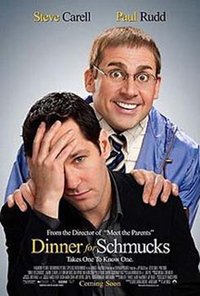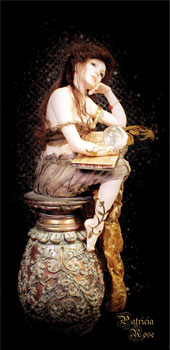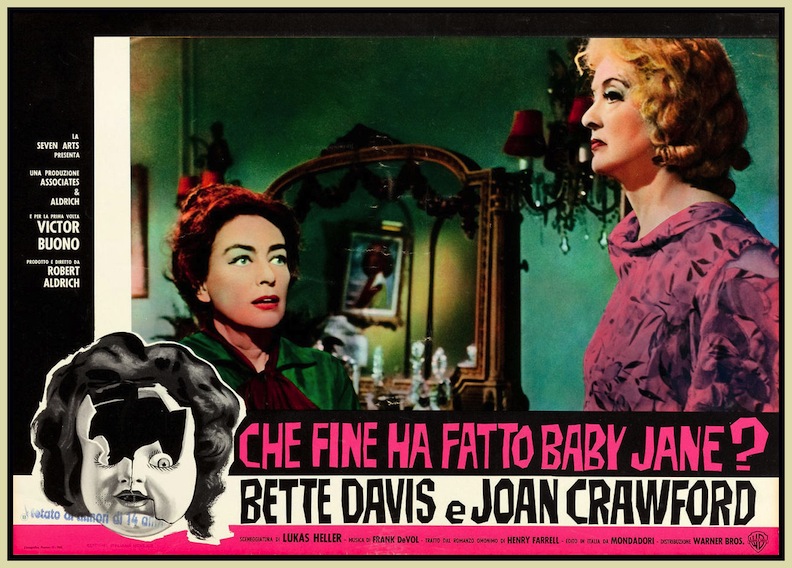
The Italian lobby card for 1962’s “What Ever Happened to Baby Jane?” featuring the two co-stars and the omnipresent doll head.
Photos Courtesy of Movie Star News
As we discover every year at Halloween, the trappings of childhood are downright horrifying for more than a handful of people. Stephen King is receiving royalties for decades now based on the fact that some folks are frightened of clowns. Despite the success of Bozo and Ronald McDonald, there are adults who nearly faint at the proposition of a rubber nose and a balloon animal. And, of course, there are the grown-ups who grow terrified when a doll is placed within their eye range. Hollywood movies have capitalized on the fragile fear factor, making porcelain dolls a demonic force to be reckoned with and revolted by. One of the most famous examples of a doll as a chilling collectible is the cult novel turned much-loved Grand Guignol film “What Ever Happened to Baby Jane?”
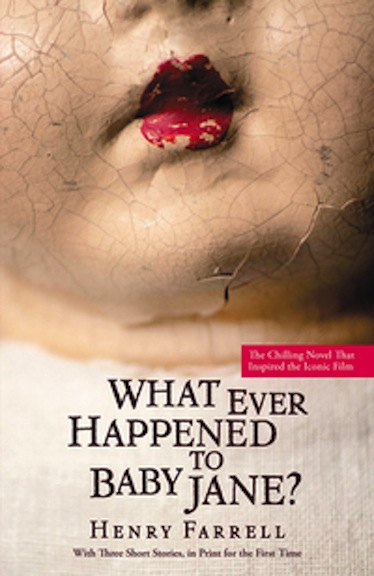
A reissue of the 1960 novella, which included other stories penned by Henry Farrell (the basis of Bette Davis’s “Hush … Hush, Sweet Charlotte,” too)
Written in 1960 by Henry Farrell, the novel became a must-read for Hollywood agents and producers. With a jaundiced eye toward the pitfalls of sudden fame, and how children can be damaged by early adulation, and adults, likewise, can become infantilized when seeking mass approval, Farrell penned a book that condemned and lampooned people’s preoccupation with stardom and the hunger for publicity. “What Ever Happened to Baby Jane?” had the potential to make stars out of whoever was cast as Jane Hudson or sister Blanche. The parts were meaty, gritty, and over-the-top horrific. Rather than signing actresses who could build their résumés with these roles, the producer Robert Aldrich went with two veteran performers who were in the midst of having their careers wane.

Doing publicity for “What Ever Happened to Baby Jane?” Bette Davis appeared on an Andy Williams musical program. She brought along the doll and sang a song based on the screenplay. Scary and campy!
The “What Ever Happened to Baby Jane?” manuscript was initially read by Joan Crawford who thought it might be a great return vehicle for herself. Though she was not a fan of Bette Davis off-screen, Crawford knew that Davis had an uncanny knack for playing difficult, complicated, and possibly dangerous women. Not afraid to be disliked in a part — Davis’s Mildred in “Of Human Bondage” remains one of the vilest women ever enshrined on celluloid — Bette Davis would be the perfect Baby Jane Hudson, a woman addled in her vaudeville heyday.
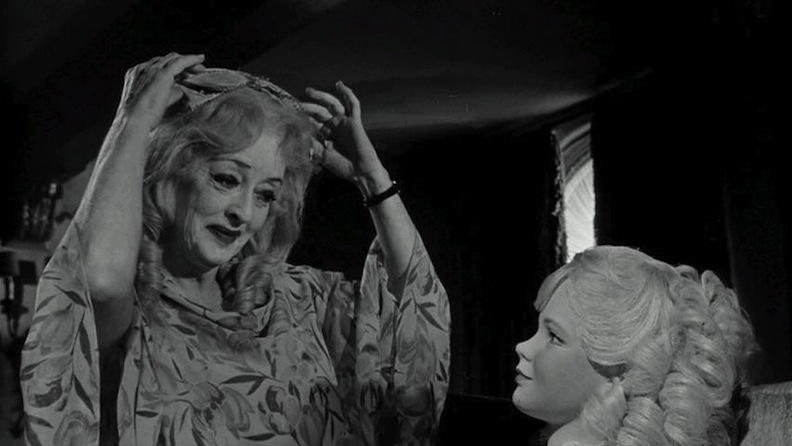
Bette Davis as Jane Hudson and her collectible “Baby Jane Hudson” portrait doll
Dressed like a saccharine toddler for the part — think Honey Boo Boo in her most whimsical pageant attire — Davis did indeed embody the deteriorating mindset and grotesque soul of an actress who has never outgrown her childhood acclaim. Carting around a porcelain doll that represented herself frozen in time as “Baby Jane Hudson,” Davis looked scary before she even uttered a single line of dialogue. Joan Crawford, who had initially gained movie notoriety for her long string of sexy upstarts and then martyred, noble mothers, took on the role of long-suffering Blanche Hudson, Jane’s sister who had eclipsed her as a movie star. While little Baby Jane eventually grew into creepy, older Baby Jane, more sexually confident Blanche became the toast of Tinseltown and won raves as a screen goddess.
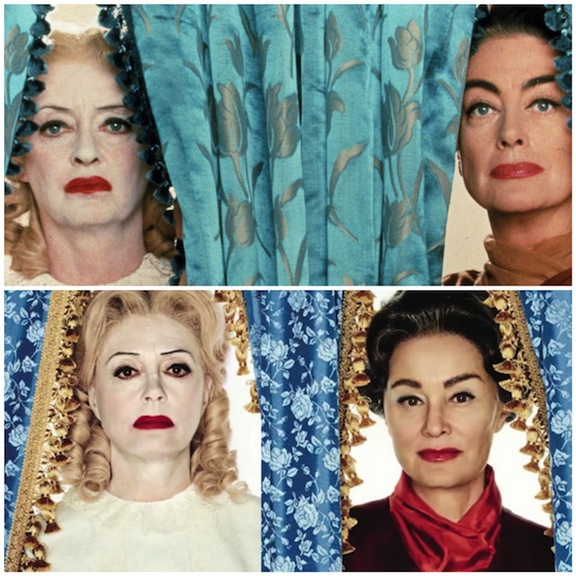
The 2018 Golden Globes recognized the portrayals of Susan Sarandon (below left) as Bette Davis, and Jessica Lange (below right) as Joan Crawford in “Feud”
The ascension of one star, while the other set into obscurity and oblivion, was the crux of the film. And with Bette Davis willing to make herself look positively awful in her manic role, “What Ever Happened to Baby Jane?” became a box-office blockbuster in 1962. It racked up award nominations — including an Oscar nod for Bette and not Joan (the basis of Ryan Murphy’s “Feud” miniseries) — and it gave both women a second shot at stardom. They both embraced their new careers and each one navigated her second chance with different end results.
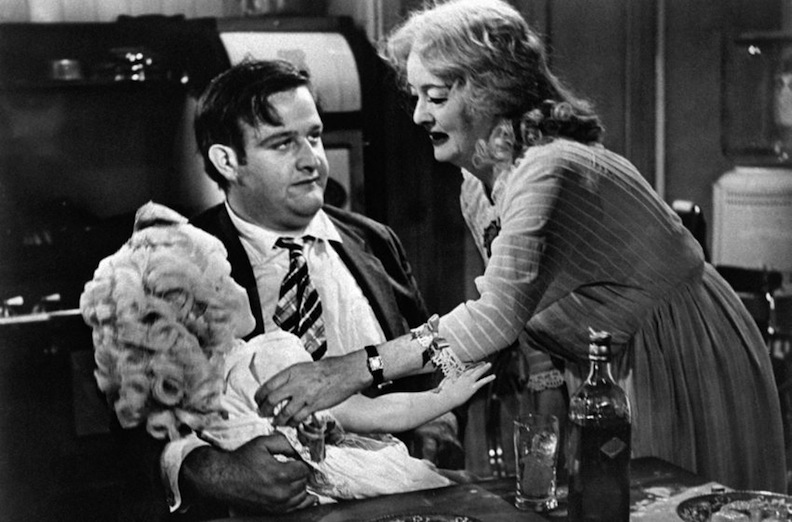
Davis’s Jane Hudson fusses with her baby-doll replica as Edwin Flagg (Victor Buono) looks on in disgust.
“What Ever Happened to Baby Jane?” resonated with audiences because its acts of horror, shot in stark black-and-white cinematography, showed two former leading ladies who were willing to look their worst while hamming it up the most. (This is particularly true of Davis, who did get the most screen time, and whose character was the supposed mastermind of all the evil and the atrocities depicted in the movie.) One of the biggest assets that Davis did have was the silent, mute companion — her blond, banana-curled porcelain doll. This totem of her past — a doll that once mirrored her wholesome innocence and youth — sitting there in judgment of her bad behavior and her deterioration, it was a stroke of genius. One only had to look at that perfectly sculpted doll, a “Baby Jane Hudson” collectible, to understand how far the Davis character had toppled.
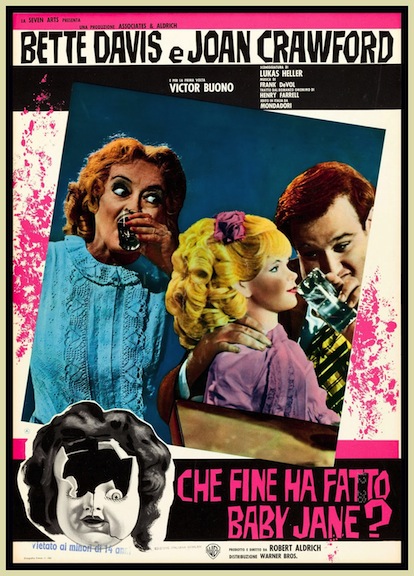
The Italian version of the movie poster
The doll figured in the advertising of the movie, and was used as a chilling symbol of Jane’s derangement. Domestically and overseas, visions of porcelain doll heads popped up alongside the film posters and on the movie-lobby cards. The filmmakers knew that the two antagonistic sisters residing in a spooky, decaying Los Angeles mansion were made even more terrifying when their third roommate was an all-seeing, all-observing doll.

A March 17, 1967, cover of “Time” magazine that notes the arrival of superstar acting sisters, Lynn and Vanessa Redgrave
“What Ever Happened to Baby Jane?” has remained one of Hollywood’s most successful horror movies. It set box-office records when it was initially released, and it continues to mesmerize audiences in special theater screenings, on television (thank you, TCM!), and in home-video conversions. The struggle between siblings, who were rivals, not colleagues, lured real-life sisters Vanessa and Lynn Redgrave to tackle the screenplay in a television adaptation. ]
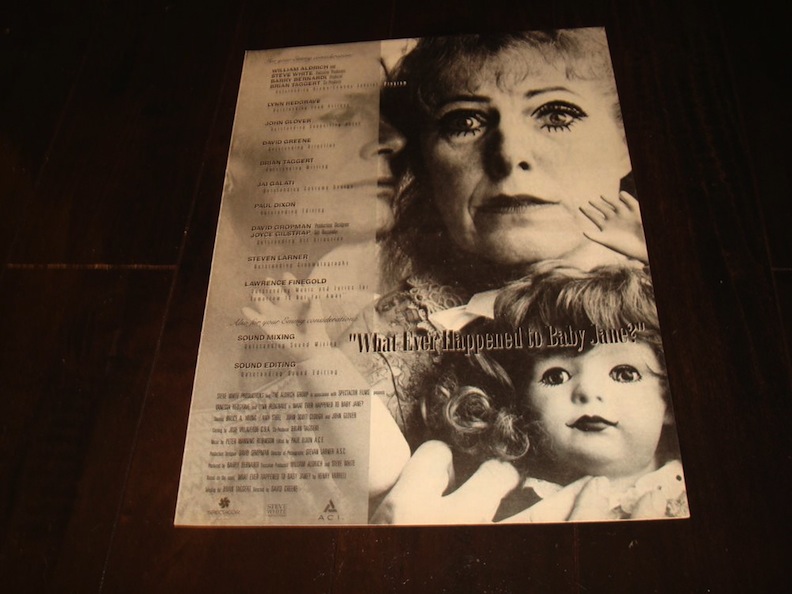
The ABC-TV production team lobbied to have Lynn Redgrave nominated for an Emmy for her work as Baby Jane.
Nearly 30 years after the original curdled moviegoers’ blood, the Redgrave siblings joined forces to co-star in a David Greene – directed telefilm. Because it was being aired in the 1990s, and the film team wanted it to seem more contemporary, Baby Jane was no longer a vaudeville has-been. Instead, Lynn Redgrave played her as a woman who had been famous in movies during the late 1940s or early 1950s. Following in the footsteps of child actresses like Margaret O’Brien or Patty McCormack, Lynn’s portrayal of Jane Hudson is that of a spoiled little rich girl who never grew up. She was accustomed to holding a close-up back in her movie musicals, and now wanders through life looking for that attention and approval.
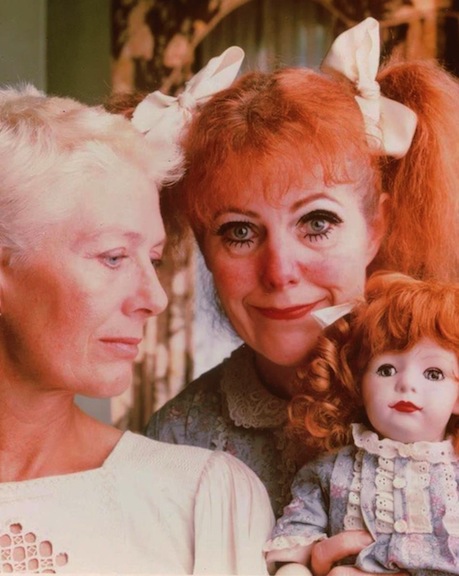
Vanessa Redgrave as Blanche Hudson; Lynn Redgrave as Jane; the silent doll as the third Hudson roommate.
The Redgrave version of “What Ever Happened to Baby Jane?” cast Vanessa, the more revered and critically acclaimed sister, as Blanche, the sibling who dwarfed Jane’s stardom. The two did put their own spins on the iconic parts, but it is hard to compete with Crawford and Davis. Even more than the 1962 version, this telling of “What Ever Happened …” is all about Jane. Lynn Redgrave is in nearly every scene of the movie, and so is her trusty doll. In fact, the doll even gets more screen time than Oscar winner Vanessa Redgrave. The doll seems to be speaking to Lynn as Jane in this teleplay. Lynn Redgrave is constantly hugging the doll, walking with it, and at the near climax of the film, she even holds the doll’s hand and walks it into the ocean with her.
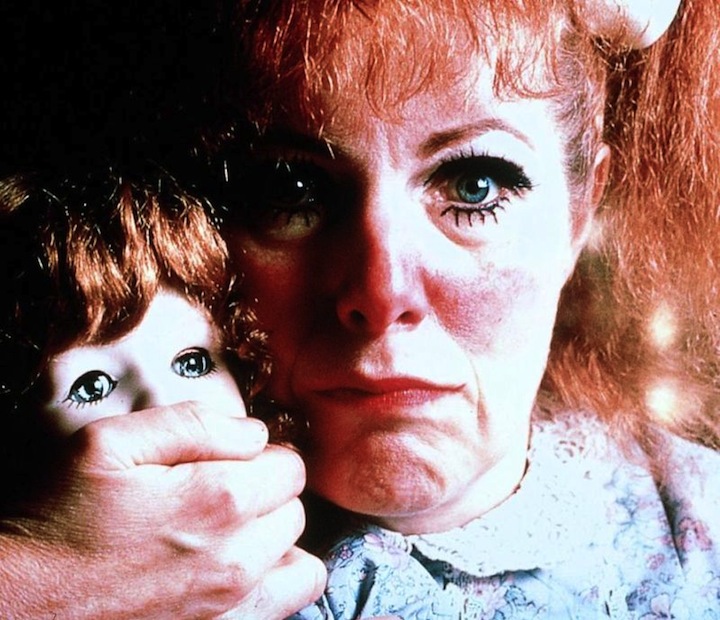
Lynn Redgrave hushing her “Baby Jane Hudson” doll counterpart
The doll version of Lynn Redgrave’s Jane is a curly-haired redhead. It wears ribbons and lace, and has a wide, deep-red set of lips. It looks as if it is considering a secret that it alone is privy to. Lynn’s Baby Jane is every inch a baby. While Davis played Jane Hudson as a washed-up alcoholic who is convinced to drag out her old sheet music and costumes to attempt a comeback, Lynn’s Jane never seemed to have abandoned her childhood persona. However, because of the terrible things she does do to her crippled sister — they go from mischievous pranks to murder attempts — Lynn Redgrave’s Baby Jane is an eternal juvenile delinquent. She doesn’t see anything she does as being wrong or lawless because she has the understanding of a child.
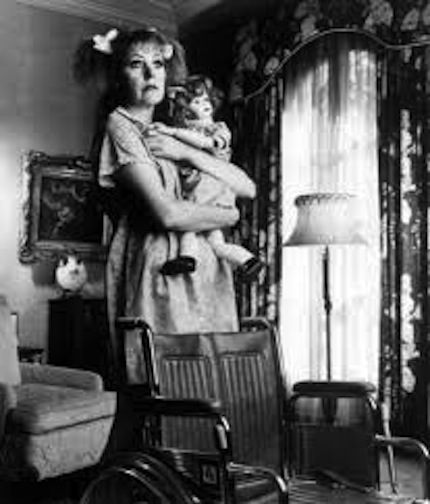
Lynn Redgrave, in a black-and-white promo still, mirroring the older, more well-known 1962 version
The original 1962 “What Ever Happened to Baby Jane?” airs throughout the year on Turner Classic Movies. I’m hoping that it pops up during the Halloween week or shortly thereafter. The Redgrave version of the story can be seen streaming on Amazon Prime. Since it originated as a TV movie, it doesn’t have the same sharp look as the silver-screen version. Interestingly by seeking to make it seem more modern or “with it,” the creative team ended up making it more anachronistic. So much has changed since 1991, the movie comes across as exceptionally dated and old-fashioned. The 1962 film, which is done in classic black-and-white, and goes out of its way intentionally to seem out of step with its time, has survived the decades more gracefully.
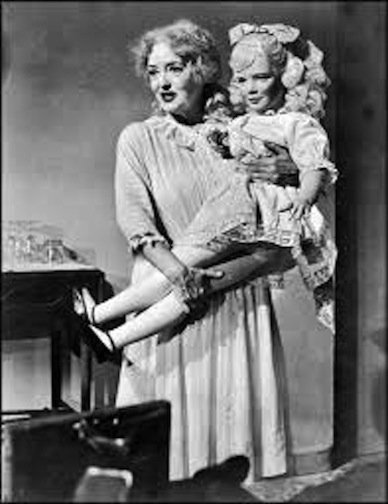
The original, the first, and potentially the best Baby Jane: Bette Davis and her lookalike doll
By always focusing on how the Hudson sisters are living in their own small world of horror and anger, bizarre behavior and unspoken truths, Robert Aldrich and his team fashioned a movie that will endure. The 1962 “What Ever Happened to Baby Jane?” doesn’t have to worry about becoming outmoded or outdated. It does not belong to any real world or any real universe. It is part of a horrorverse — a creepy house where the inhabitants exist to inflict pain on one another.

In a shocking twist on the original film, Jane’s musical accompanist dresses up as Blanche! John Glover in Vanessa Redgrave drag.
Check out the Redgrave sisters’ effort on Amazon while it is free to Prime members. It’s fascinating to see the excesses that are added to the script to keep it interesting, I suppose, to a late-20th-century audience. (It has allusions to underage male prostitutes, transvestites, interracial relationships, and, particularly head-scratching to modern-day viewers, trips to video rental stores and disagreements over VHS tape residuals!)

The title sequence of the original 1962 movie, which startled and shocked its audience
As a meditation on the corruption of fame, “What Ever Happened to Baby Jane?’ doesn’t have an equal. Its oft-quoted line “You mean we could’ve been friends all this time,” uttered by Jane at her most lucid (ironically, after committing her most atrocious actions) is heartbreaking when delivered by both Bette Davis and Lynn Redgrave. In both movies, the “Baby Jane Hudson” dolls evoke auras of madness and arrested development. In both films, the escalating crimes of Jane lead to her ultimate arrest.
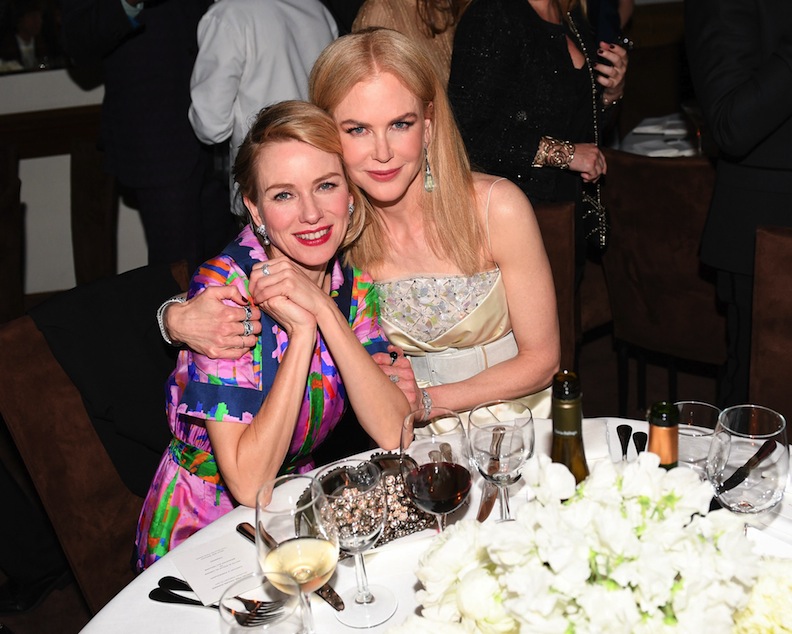
Naomi Watts and Nicole Kidman at Pre-Oscar dinner in February 2017, Courtesy of People.com (Photo by Billy Farrell, BFA/REX/Shutterstock)
We realize that their childhood-portrait dolls reflect how the two Janes still see themselves: pure, childlike, vulnerable, and fragile. We see how the world-at-large sees them and their dolls as scary, creepy, spooky, and damaged. They have lost their value. It’s a two-hander screenplay that will never lose its star wattage, and I’d love to see it revised a third time, but cast with real-life best friends and fellow Aussies Nicole Kidman (as Baby Jane) and Naomi Watts (as Blanche). We’ll have to see if these two stars will permit the ravages of time and on-screen makeup to ruin their current youthful good looks.

